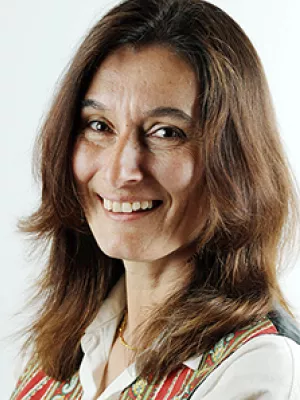
Magali Ljungar-Chapelon
Teaching staff

Virtual Bodies in Ritual Procession — Digital co-production for actors and interpreters of the past
Author
Summary, in English
This article will present and discuss the process of digital co-production and audiences' responses to the full-scale interactive, gestural, visual and musical experience of a Virtual Reality arts play. This was inspired by cist-slab images from the Kivik Grave, which is Sweden's most famous Bronze Age grave. The aim of the VR arts play was to use digital technology to engage users as time-travellers and participants in a ritual and sensory experience. The play was part of the exhibition Petroglyphics — Virtual Rock-Carvings Experiences at Österlens Museum, the culture historical museum of Simrishamn, Southern Sweden (May 2013-December 2014). By physically taking part in the artistic imaginary performance of a burial ceremony depicted on one of the stone slabs inside the tomb, the museum visitor was invited to contribute to the interpretative process of Bronze Age imagery. Arising from this digital pilot project and research experiment, followed by an audience study involving over 250 museum visitors, this article first discusses the process, challenges and opportunities of digital co-production in an exhibition context, when archaeological, technological and artistic skills are combined in order to explore new ways to engage a museum audience. The focus then moves on to consider what interpretative processes look like when digital co-production intersects the physical participation of museum visitors. One of the major results is that 94% of surveyed museum visitors, adults as well as children, stated that digital technology combined with art that engages the user's body opens up new forms of knowledge and audience experiences. Furthermore, this study reveals that a full-body, interactive and multisensory experience with virtual space stimuli has the potential to involve several museum visitors, emotionally awaking feelings of identification prompted by specific archaeological findings, and nurturing vivid, individual interpretative processes in relation to visitors' own social, historical and cultural references and former experiences.
Department/s
- Ergonomics and Aerosol Technology
- Malmö Academy of Music
Publishing year
2017
Language
English
Publication/Series
Internet Archaeology
Issue
46
Document type
Journal article review
Publisher
Department of Archaeology, University of York
Topic
- Visual Arts
Keywords
- Archaeo-artistic
- Co-production
- Cognitivo-emotional
- Democratic
- Digital
- Inter-sensory
- Interpretation
- Natural interaction
- Participant
- Team
Status
Published
ISBN/ISSN/Other
- ISSN: 1363-5387